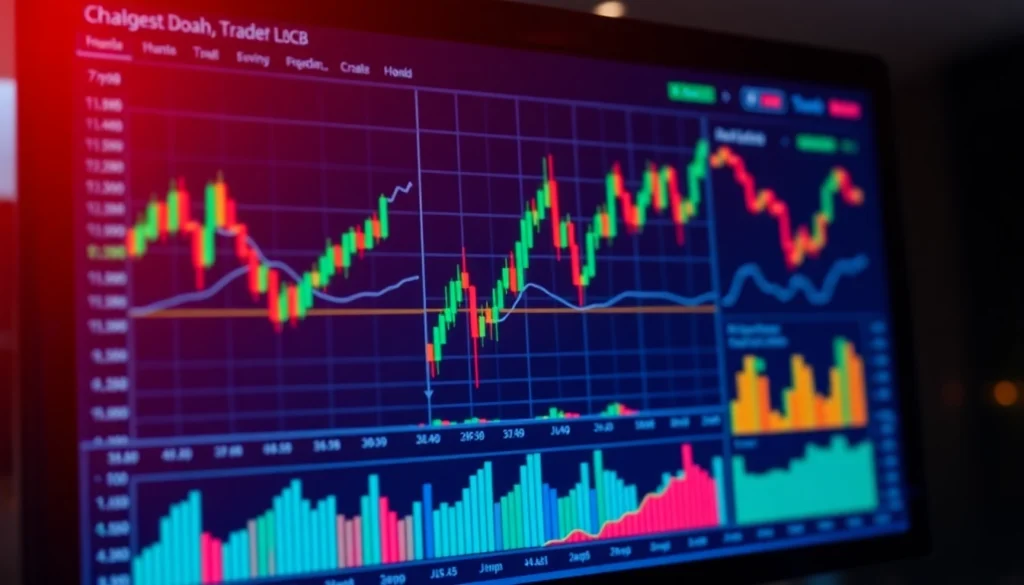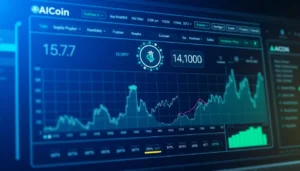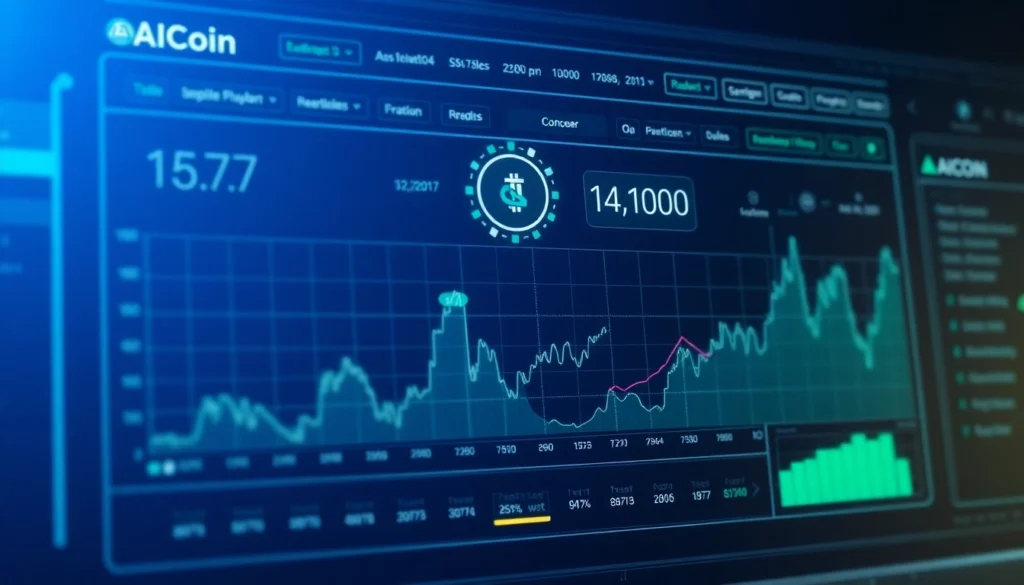Introduction to Trading View and Its Core Features
In the fast-paced world of trading and investing, having access to reliable, comprehensive, and dynamic charting tools is essential. trading view has emerged as one of the most influential platforms, redefining the way traders analyze markets, develop strategies, and connect with a global community. This sophisticated platform offers a plethora of features tailored for both novice investors and seasoned professionals, making it an indispensable tool for navigating financial markets effectively.
Understanding the Trading View Interface
At the core of Trading View’s appeal is its user-friendly yet highly customizable interface. Upon logging in, traders are greeted with a dashboard that displays multiple charts, watchlists, and news streams. The interface allows seamless navigation between different markets, assets, and analysis tools. Its design prioritizes clarity, enabling users to manage multiple charts simultaneously, compare different timeframes, and access technical tools effortlessly. The platform’s layout is adaptable, allowing users to tailor their workspace according to their trading style—whether for day trading, swing trading, or long-term investing.
Key Tools for Market Analysis
Trading View provides an extensive suite of tools crucial for market analysis. Technical analysis is simplified with integrated indicators, drawing tools, and pattern recognition features. Users can access pre-built indicators such as Moving Averages, Bollinger Bands, MACD, RSI, and more, or create customized indicators tailored to their strategies. Additionally, fundamental analysis features include economic calendars and news feeds that keep traders updated on market-moving events. The platform also supports social features, allowing traders to share insights, ideas, and strategies within the community.
Setting Up Your Trading Environment
Getting started involves customizing your watchlist, alert parameters, and chart layouts. A well-organized watchlist ensures quick access to your preferred assets, whether stocks, cryptocurrencies, forex pairs, or commodities. Trading View allows users to set up real-time alerts based on price levels, indicator signals, or chart patterns—crucial for capturing timely trading opportunities. Integration with brokerage accounts enables direct execution of trades from the platform, streamlining the entire trading workflow and reducing reaction time in volatile markets.
Advanced Charting and Technical Indicators on Trading View
Customizing Charts for Better Insights
Customization is a cornerstone of Trading View’s platform. Users can switch between various chart types—candlestick, bar, line, Renko, and Heikin Ashi—to suit their analysis style. Multiple timeframes are supported, allowing in-depth investigation of asset behavior over seconds to months. color schemes, grid setups, and scale types can be adjusted to enhance visual clarity, reducing analysis fatigue and enabling more precise decision-making.
Popular Indicators and How to Use Them
Technical indicators serve as the backbone for market predictions. For instance, Moving Averages help identify trend directions, while RSI and MACD assist in spotting overbought or oversold conditions. Combining these indicators with chart patterns, like head and shoulders or triangles, offers a robust framework for strategy development. For example, a trader might look for bullish divergences on RSI combined with a breakout from a consolidation pattern, signaling a potential buying opportunity.
Creating and Saving Trading Strategies
Trading View’s scripting environment, Pine Script, empowers users to develop tailored indicators and backtest trading strategies. Once a strategy is tested and refined, it can be saved and applied across multiple charts. This feature is instrumental in maintaining consistency, automating parts of analysis, and objectively evaluating performance based on historical data. Implementing a disciplined approach with saved strategies enhances trading effectiveness and helps mitigate emotional biases.
Leveraging Trading View for Effective Trading and Investing
Using Alerts and Notifications to Capture Opportunities
Real-time alerts are central to proactive trading. Trading View allows setting up custom notifications based on price levels, indicator signals, or chart patterns. For instance, an alert can notify you when a stock crosses a key resistance level or when a cryptocurrency’s RSI indicates an overbought condition. These timely cues ensure traders act swiftly, especially in fast-moving markets, reducing delays that often lead to missed opportunities.
Integrating Trading View with Brokerage Accounts
Direct integration with major brokerages enables a seamless transition from analysis to execution. While Trading View itself doesn’t execute trades, its integrations allow traders to connect their accounts via supported APIs or third-party connectors. This setup streamlines order placement, risk management, and trade monitoring—crucial for traders who need agility and precision. Proper integration ensures that analysis translates into action swiftly, minimizing slippage and maximizing profit potential.
Analyzing Market Trends with Community Ideas
One of Trading View’s strengths is its vibrant social component. Community ideas—market forecasts, chart patterns, and trading setups shared by other users—add depth to individual analysis. Engaging with the community enables traders to explore diverse perspectives, validate ideas, and stay updated on emerging trends. Many seasoned traders refine their strategies by observing community insights, learning new techniques, and participating in discussions.
Best Practices for Trading View Users
Maintaining Accurate Watchlists
Efficient watchlists are vital for quick access to relevant assets. Regularly updating your watchlist ensures you focus on high-probability trade setups. Categorize assets by asset class, trading strategy, or market region to optimize your timeframe and decision-making process. Using tags and labels within Trading View facilitates rapid filtering and exploration during volatile market conditions.
Managing Risk with Technical Analysis
Proper risk management is the bedrock of sustainable trading. Using technical tools such as stop-loss orders, position sizing, and trailing stops within Trading View helps control downside risk. Technical analysis guides placement of stop-loss levels just beyond key support or resistance zones. Consistently applying these techniques reduces emotional decision-making and preserves capital during adverse market movements.
Utilizing Mobile Apps for On-the-Go Trading
Trading View’s mobile applications ensure that traders stay connected regardless of location. The mobile interface replicates key features like chart analysis, alerts, and even order placement, providing flexibility. This accessibility allows traders to respond promptly to market events—an essential advantage in today’s rapidly fluctuating environment.
Metrics and Insights to Measure Trading View Effectiveness
Tracking Your Performance and Strategies
Regularly analyzing your trading results is crucial for growth. Trading View’s paper trading feature and strategy testing tools enable performance evaluation without risking real capital. Tracking metrics such as win rate, risk-reward ratio, and maximum drawdown helps refine your trading methods over time.
Staying Updated with Market News
Incorporating real-time news feeds and economic calendars within Trading View ensures that your analysis considers fundamental factors influencing asset prices. This holistic approach improves decision accuracy, especially around earnings reports, geopolitical events, or macroeconomic shifts.
Continuous Learning and Community Engagement
The platform encourages ongoing education through webinars, tutorials, and active participation in community discussions. Engaging with other traders fosters continuous improvement, exposes you to innovative strategies, and expands your market understanding—key components of long-term success.







